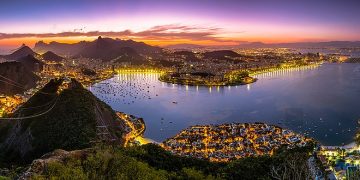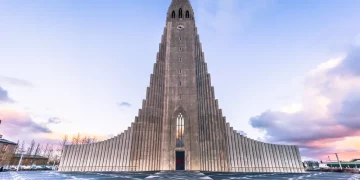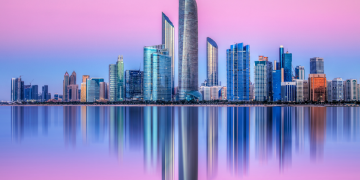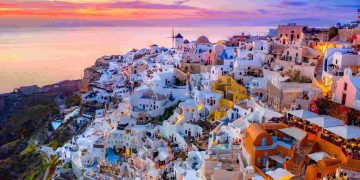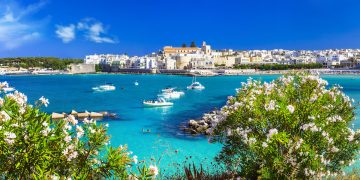Introduction
Yellowstone National Park, the world’s first national park, is an iconic natural wonder located primarily in Wyoming, though it also extends into Montana and Idaho. This vast and awe-inspiring wilderness is home to a range of unique attractions, including geothermal marvels, diverse wildlife, breathtaking landscapes, and rich cultural heritage. Whether you’re a nature lover, photographer, hiker, or simply someone looking to explore one of the most famous parks in the world, Yellowstone offers a wealth of experiences that make it a must-visit destination.
However, planning a trip to Yellowstone can be overwhelming due to its immense size and diversity of experiences. From deciding on the best time to visit and understanding the park’s geographical layout to choosing where to stay and what to do, this detailed guide is designed to answer all your questions and help you make the most of your visit.
1. Why Should You Visit Yellowstone National Park?
Yellowstone is a place of striking contrasts, where visitors can witness nature’s raw power and tranquility side by side. It is a park that holds global significance, offering a variety of experiences that cater to a wide range of interests. Below are some of the key reasons why Yellowstone is a must-see destination:
1.1 Geothermal Wonders
Yellowstone is renowned for its geothermal activity. The park contains over half of the world’s active geysers, including the famous Old Faithful. Apart from geysers, the park is dotted with hot springs, fumaroles, and mud pots that display the Earth’s inner forces in stunning and often surprising ways. Visitors can marvel at the bright colors of the Grand Prismatic Spring or take in the beauty of the Artist Paint Pots.
1.2 Diverse Wildlife
Yellowstone’s vast and varied landscapes provide a home for a wide range of wildlife. The park is one of the best places in North America to observe animals in the wild. Visitors might spot bison, elk, grizzly bears, wolves, and other wildlife in their natural habitat, especially in areas like Lamar Valley, which is often referred to as the “Serengeti of North America.”
1.3 Scenic Landscapes
From expansive valleys and dense forests to towering mountains and pristine lakes, Yellowstone offers stunning landscapes at every turn. The Yellowstone Lake, the Grand Canyon of the Yellowstone, and the Lamar Valley are just a few examples of the incredible scenery the park has to offer. The park is also home to waterfalls like the Lower Falls, which drops an impressive 308 feet into the Yellowstone River, creating a spectacular vista.
1.4 Adventure and Outdoor Activities
Yellowstone provides a wealth of outdoor activities that allow visitors to immerse themselves in the park’s natural beauty. Hiking, fishing, boating, wildlife viewing, camping, and even winter activities like snowshoeing and cross-country skiing are just some of the activities available to visitors.
1.5 Rich History and Culture
Yellowstone National Park is not only a natural treasure but also a place of cultural and historical importance. It has been home to various Native American tribes for thousands of years. In addition, the park is closely associated with the creation of the national park system in the United States, a movement that has inspired similar conservation efforts worldwide.
2. When Is the Best Time to Visit Yellowstone?
Yellowstone’s size and diverse geography mean that each season offers a unique experience. The best time to visit depends largely on the kind of experience you’re hoping to have.
2.1 Summer (June to August)
Summer is the most popular time to visit Yellowstone. During this season, all park roads and facilities are open, and the weather is warm and pleasant, with daytime temperatures typically ranging from 70°F to 85°F. Summer is ideal for exploring the park’s iconic attractions, such as Old Faithful, Mammoth Hot Springs, and the Grand Canyon of the Yellowstone. However, this is also when the park sees the highest number of visitors, so expect larger crowds and higher prices for accommodations.
2.2 Fall (September to October)
Fall is one of the best times to visit Yellowstone if you want to avoid the summer crowds. The weather is still mild, with daytime temperatures averaging around 50°F to 70°F, and the autumn foliage provides an added layer of beauty to the park’s landscapes. Wildlife is also very active during this time, especially the elk rut (mating season), which is a major draw for wildlife enthusiasts. The park starts to slow down after Labor Day, making it a more peaceful time to visit.
2.3 Winter (November to March)
Winter in Yellowstone offers a completely different experience. The park becomes a winter wonderland, with snow-covered landscapes and the chance to witness wildlife in a quieter, more serene setting. Though most of the roads are closed during the winter, the park is accessible via snowmobiles, snow coaches, and cross-country skiing. The winter months offer excellent opportunities for spotting wolves and other animals that are more active in the cold.
2.4 Spring (April to May)
Spring is a time of renewal in Yellowstone. The weather begins to warm up, with temperatures ranging from 30°F to 60°F. The snow starts melting, creating powerful waterfalls, and wildflowers begin to bloom. Wildlife also starts to emerge from hibernation, and newborn animals can often be spotted. Spring is an ideal time for visitors who want to experience the park’s beauty before the summer crowds arrive.
3. How to Get to Yellowstone National Park?
Yellowstone National Park is located in the western United States, covering parts of Wyoming, Montana, and Idaho. It is accessible by car, bus, and air.
3.1 By Air
There are several airports near Yellowstone National Park, including:
- Jackson Hole Airport (JAC) – Located in Jackson, Wyoming, this airport is closest to the park’s southern entrance. It’s a popular choice for those visiting Yellowstone and nearby Grand Teton National Park.
- Bozeman Yellowstone International Airport (BZN) – Situated in Bozeman, Montana, this airport serves visitors arriving at the park’s northern and western entrances.
- Yellowstone Regional Airport (COD) – Located in Cody, Wyoming, this airport is closest to the park’s eastern entrance.
3.2 By Car
Yellowstone can be accessed via five main entrances:
- North Entrance (Gardiner, MT) – Open year-round and the only entrance accessible during the winter months.
- West Entrance (West Yellowstone, MT) – The busiest entrance and the most common entry point.
- South Entrance (Grand Teton National Park, WY) – Accessed through Grand Teton, this entrance connects the two parks.
- East Entrance (Cody, WY) – Known for its scenic route along the Shoshone River.
- Northeast Entrance (Cooke City, MT) – A less crowded entrance, leading to the Lamar Valley, famous for wildlife watching.

4. Where to Stay in Yellowstone?
Yellowstone offers a variety of accommodations, including hotels, lodges, campgrounds, and backcountry sites.
4.1 Inside the Park
Staying inside Yellowstone is highly recommended to fully experience the park. Some popular accommodations include:
- Old Faithful Inn – A historic lodge located near the Old Faithful geyser.
- Mammoth Hot Springs Hotel – A classic Yellowstone hotel near the park’s northern entrance.
- Lake Yellowstone Hotel – Offering beautiful lakefront views and a more upscale experience.
- Canyon Lodge – Conveniently located near the Grand Canyon of the Yellowstone.
4.2 Outside the Park
For more lodging options, nearby towns like West Yellowstone, Gardiner, and Cody offer hotels, motels, and campgrounds. Many of these towns have year-round accommodations.
5. What Are the Must-See Attractions in Yellowstone?
Yellowstone is vast, and there is no shortage of natural wonders to explore. Here are some must-see spots within the park:
5.1 Old Faithful
One of the world’s most famous geysers, Old Faithful erupts approximately every 90 minutes, creating a spectacular display of hot water and steam. The surrounding area, the Upper Geyser Basin, features numerous other geysers and hot springs.
5.2 Grand Prismatic Spring
The Grand Prismatic Spring is the largest hot spring in the U.S. and is known for its vibrant colors. The hot spring’s rainbow-like appearance, with hues of blue, green, yellow, and red, is a photographer’s dream.
5.3 The Grand Canyon of the Yellowstone
Carved by the Yellowstone River, the Grand Canyon of the Yellowstone is a breathtaking canyon with cliffs that reach up to 1,200 feet. The Lower Falls, a 308-foot waterfall, is one of the park’s most iconic sights.
5.4 Yellowstone Lake
The largest high-elevation lake in North America, Yellowstone Lake is a serene and scenic spot. Visitors can enjoy boating, fishing, and picnicking along its shores.
5.5 Lamar Valley
Renowned for its wildlife, Lamar Valley offers some of the best opportunities for wildlife viewing in Yellowstone. Bison, wolves, and grizzly bears are frequently seen in this area, especially at dawn and dusk.
6. What Activities Can You Do in Yellowstone?
Yellowstone offers a wide range of activities that allow visitors to experience its natural beauty firsthand.
6.1 Hiking
With over 900 miles of hiking trails, Yellowstone is a paradise for hikers of all levels. Popular trails include:
- Fairy Falls Trail: A moderate hike to a beautiful waterfall.
- Mount Washburn Trail: A strenuous hike with panoramic views of the park.
- Artist Point Trail: A short, accessible trail with incredible views of the Grand Canyon
of the Yellowstone.
6.2 Wildlife Watching
Yellowstone is one of the best places in the U.S. to view wildlife in their natural habitats. Early morning or late evening are the best times to see animals like bison, elk, wolves, and bears.
6.3 Fishing
Fishing is a popular activity in Yellowstone. The park is home to several rivers, streams, and lakes, with many offering great opportunities for anglers. You can fish for trout, cutthroat, and other native species.
6.4 Photography
Yellowstone’s dramatic landscapes and abundant wildlife make it a photographer’s dream. From the geysers and hot springs to the animals and waterfalls, there are countless opportunities to capture the park’s beauty.
6.5 Winter Sports
During the winter months, Yellowstone becomes a playground for snowshoers, cross-country skiers, and snowmobilers. The winter landscape is stunning, and the park’s wildlife is still active, making it a magical experience.
Conclusion
Yellowstone National Park is a destination like no other, offering a wealth of experiences that are as diverse as they are unforgettable. From its geothermal wonders to its stunning landscapes, abundant wildlife, and rich history, Yellowstone continues to capture the hearts and imaginations of travelers worldwide. Whether you’re visiting for a weekend getaway or embarking on a more extended adventure, Yellowstone is sure to leave you with memories that will last a lifetime.
So, what makes Yellowstone National Park the ultimate destination for nature enthusiasts? It’s the perfect combination of natural beauty, outdoor adventure, and cultural significance that makes this park a truly one-of-a-kind experience.



